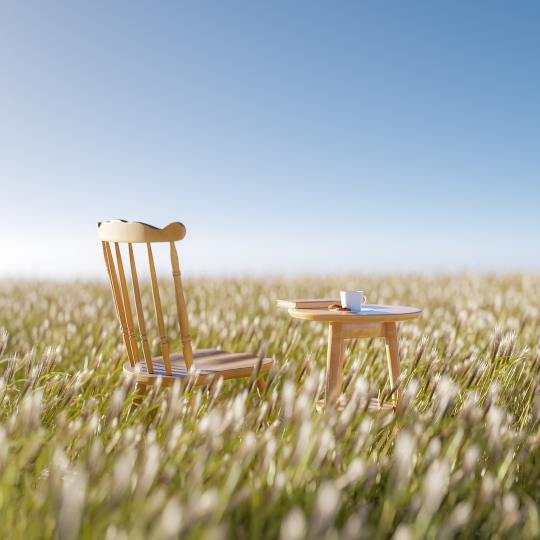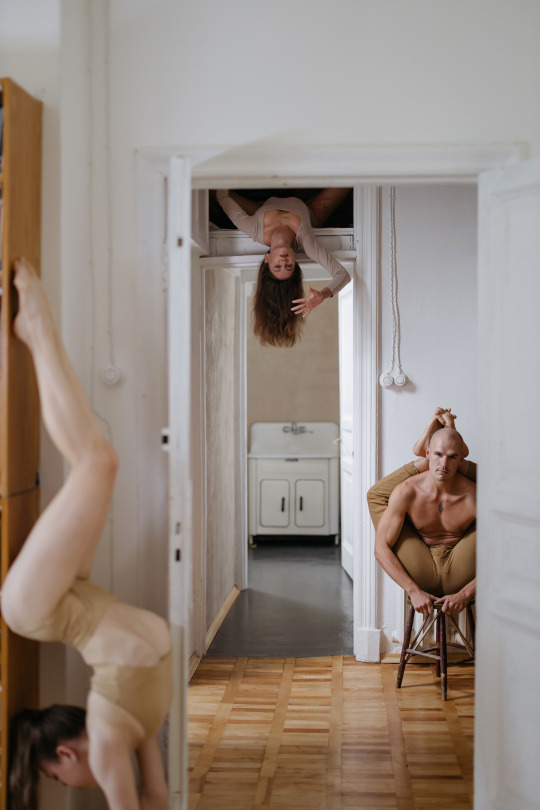#yogaforflexibility
Text
youtube
Desk Yoga
#yoga for beginners#yogapractice#yoga for anxiety#yogaforflexibility#yogabenefits#yoga teacher#yogachallenge#yogaintoronto#yogateacher#yoga#officeyoga#Youtube
7 notes
·
View notes
Photo

ɪɴꜱᴘɪʀᴇ, ꜱʜᴀʀᴇ, ꜱᴘʀᴇᴀᴅ ᴋɪɴᴅɴᴇꜱꜱ, ʟɪᴠᴇ & ʟᴏᴠᴇ ʏᴏɢᴀ🔅ᴍɪʏ✨ . @franmorenocanto 🧘🏻♂️ ʙᴀꜱᴇᴅ ᴏᴜᴛ ᴏꜰ 📍 Spain 🇪🇸 . ꜰᴏʟʟᴏᴡ ᴏᴜʀ ʙᴀᴄᴋ-ᴜᴘ ᴀᴄᴄᴏᴜɴᴛ @Man.in.Yoga . . . . . . . #yogamotivation #yogagoals #yogis #yogamen #mensyoga #yogainspiration #meninyoga #yogilifestyle #yogistyle #dailyyogapractice#yogaeverytime #menatyoga #yogaforathletes #yogaforever #acroyoga #yogaforstrength #yogaforflexibility #yogaforfitness #yogisoul #asanaoftheday #asanapractice #menyoga #dailyyogapose #yogiofinstagram #yogiforlife #yogiintraining #yogilove #yogaforman #yogigram #yogaformen https://www.instagram.com/p/Cj-pgmaLyU8/?igshid=NGJjMDIxMWI=
#yogamotivation#yogagoals#yogis#yogamen#mensyoga#yogainspiration#meninyoga#yogilifestyle#yogistyle#dailyyogapractice#yogaeverytime#menatyoga#yogaforathletes#yogaforever#acroyoga#yogaforstrength#yogaforflexibility#yogaforfitness#yogisoul#asanaoftheday#asanapractice#menyoga#dailyyogapose#yogiofinstagram#yogiforlife#yogiintraining#yogilove#yogaforman#yogigram#yogaformen
6 notes
·
View notes
Text
#YogaPoses#WarriorPose#Virabhadrasana_I#Virabhadrasana_II#Virabhadrasana_III#YogaforStrength#YogaforBalance#HathaYoga#VinyasaYoga#YogaAsanas#YogaforBeginners#YogaSequences#YogaforFlexibility#StandingPoses#YogaPractice#Mindfulness#BodyAlignment#CoreStrength#BalancePoses#YogaBenefits#yoga#yogaeverydamnday#yogalife#yogainspiration#yogalove#yogagirl#yogachallenge#yogaeverywhere#yogaeveryday#yogapractice
0 notes
Text
#Chakrasana#WheelPoseYoga#BackbendPose#YogaAsana#YogaPractice#YogaPoses#YogaForFlexibility#YogaForStrength#HeartOpeningPose#MindBodyBalance#yoga#yogaeverydamnday#yogalife#yogainspiration#yogalove#yogachallenge#yogaeverywhere#yogaeveryday#yogapractice#yogateacher#yogapose#instayoga#yogajourney#yogadaily
0 notes
Photo

Igniting Inner Strength with Fire Log Pose: Your Complete Guide to A … https://rntozen.com/blog/yoga/igniting-inner-strength-with-fire-log-pose-your-complete-guide-to-agnistambhasana/
0 notes
Text
The benefits of practicing deep relaxation techniques.

Introduction to Deep Relaxation Techniques
Deep relaxation techniques are a set of practices designed to reduce stress and promote overall well-being. They involve calming the mind and relaxing the body, leading to a state of deep rest that is different from ordinary sleep or rest.
Definition of Deep Relaxation Techniques
Deep relaxation techniques are methods that help to calm your mind and relax your body. They are designed to counteract the effects of stress and bring about a state of deep rest and tranquility. These techniques can include practices like deep breathing, meditation, progressive muscle relaxation, and visualization.
Brief Overview of Different Types of Deep Relaxation Techniques
Deep Breathing
Deep breathing is a simple yet powerful relaxation technique. It's easy to learn, can be practiced almost anywhere, and provides a quick way to get your stress levels in check. Deep breathing is the cornerstone of many other relaxation practices, too, and can be combined with other relaxing elements such as aromatherapy and music.
Meditation
Meditation is a practice where an individual uses a technique – such as mindfulness, or focusing the mind on a particular object, thought, or activity – to train attention and awareness, and achieve a mentally clear and emotionally calm and stable state. Learn more about meditation here.
Progressive Muscle Relaxation
Progressive muscle relaxation is a method that helps relieve tension. In this relaxation technique, you focus on slowly tensing and then relaxing each muscle group. This can help you focus on the difference between muscle tension and relaxation, and you become more aware of physical sensations.
Visualization
Visualization, or guided imagery, is a variation of traditional meditation that involves imagining a scene in which you feel at peace, free to let go of all tension and anxiety. This technique can be aided by scripts or apps that guide you through the imagery.

Photo by Alexander Grey on Unsplash
The Science Behind Deep Relaxation Techniques
Understanding the science behind deep relaxation techniques can help us appreciate their benefits more. These techniques work by interacting with the body's stress response, specifically the nervous and endocrine systems.
Understanding the Stress Response
When we encounter a perceived threat, our bodies respond by releasing stress hormones like adrenaline and cortisol. This is known as the "fight or flight" response. While this response is crucial for survival, when it's constantly triggered by everyday events, it can take a toll on the body and mind.
How Deep Relaxation Techniques Counteract Stress
Impact on the Nervous System
Deep relaxation techniques can help to calm the nervous system, reducing the activity of stress hormones and increasing the activity of neurotransmitters that promote relaxation and well-being.
Impact on the Endocrine System
These techniques also have a positive impact on the endocrine system, helping to regulate hormones related to stress, sleep, and mood.
Research Supporting the Efficacy of Deep Relaxation Techniques
Several studies have shown the benefits of deep relaxation techniques. For example, a Harvard Health article discusses how these techniques can help control the stress response and promote relaxation.

Photo by Louis Hansel on Unsplash
Physical Benefits of Practicing Deep Relaxation Techniques
Practicing deep relaxation techniques can lead to numerous physical benefits, including improved cardiovascular health, enhanced immune system function, better sleep quality, and reduced chronic pain.
Improved Cardiovascular Health
Deep relaxation techniques can help lower blood pressure, reduce heart rate, and improve blood circulation, all of which contribute to better cardiovascular health.
Enhanced Immune System Function
By reducing stress and promoting relaxation, these techniques can boost the immune system, making you more resistant to illnesses and infections.
Better Sleep Quality
Practicing deep relaxation techniques can improve sleep quality by helping you fall asleep faster, stay asleep longer, and wake up feeling more refreshed. Here are some techniques specifically for menopause-related sleep issues.
Reduced Chronic Pain
These techniques can also help manage chronic pain by reducing muscle tension and promoting relaxation.

Photo by Kier in Sight Archives on Unsplash
Psychological Benefits of Practicing Deep Relaxation Techniques
Along with physical benefits, deep relaxation techniques also offer significant psychological benefits, including reduced anxiety and depression, improved focus and concentration, enhanced emotional well-being, and increased resilience to stress.
Reduced Anxiety and Depression
Deep relaxation techniques can help manage symptoms of anxiety and depression by promoting relaxation, improving mood, and reducing stress.
Improved Focus and Concentration
By calming the mind, these techniques can improve focus and concentration, making it easier to perform tasks and solve problems.
Enhanced Emotional Well-being
Practicing deep relaxation techniques can enhance emotional well-being by promoting a positive mood, boosting self-confidence, and improving self-awareness.
Increased Resilience to Stress
Regular practice of these techniques can increase resilience to stress, helping you handle stressful situations more effectively. Learn more about stress management here.

Photo by Mehrab Sium on Unsplash
Practical Tips for Incorporating Deep Relaxation Techniques into Daily Life
While understanding the benefits of deep relaxation techniques is important, it's equally crucial to know how to incorporate them into your daily life. Here are some practical tips to help you get started.
Creating a Routine for Practice
Establish a daily routine for practicing deep relaxation techniques. This could be in the morning to start your day on a positive note, or at night to help you unwind and prepare for sleep.
Using Apps and Online Resources
There are numerous apps and online resources available that can guide you through different deep relaxation techniques. These can be particularly helpful for beginners.
Combining Deep Relaxation Techniques with Other Wellness Practices
Exercise
Combining deep relaxation techniques with regular physical exercise can enhance the benefits of both. Exercise helps to reduce stress and improve mood, while relaxation techniques promote deep rest and recovery. Learn more about mindful movement here.
Healthy Eating
A balanced diet can complement the benefits of deep relaxation techniques. Certain foods can promote relaxation and reduce stress, such as those rich in omega-3 fatty acids, magnesium, and B vitamins.
Overcoming Common Challenges in Practicing Deep Relaxation Techniques
It's common to face challenges when starting to practice deep relaxation techniques. These might include finding time for practice, dealing with distractions, or struggling to focus. Remember that it's normal to face these challenges, and with patience and consistency, you'll be able to overcome them.

Photo by Mohamed Nohassi on Unsplash
Conclusion: The Long-Term Impact of Regular Practice of Deep Relaxation Techniques
Regular practice of deep relaxation techniques can have a profound impact on your physical and psychological health, leading to improved quality of life.
Sustained Physical and Psychological Health Benefits
With regular practice, the benefits of deep relaxation techniques can become more pronounced and sustained. This includes both physical benefits like improved cardiovascular health and psychological benefits like reduced anxiety.
Improved Quality of Life
By promoting relaxation, reducing stress, and improving overall well-being, deep relaxation techniques can significantly improve quality of life.
Encouragement for Continued Practice and Exploration of Different Techniques
There are many different deep relaxation techniques to explore, and different techniques work better for different people. So, don't be discouraged if one technique doesn't work for you. Keep exploring and practicing, and you'll find the techniques that work best for you.
Remember, the key to reaping the benefits of deep relaxation techniques is regular practice. So, start incorporating these techniques into your daily life today, and experience the profound benefits they can offer. Here's a great place to start.
#Relaxation Techniques
#Relaxation Therapy
#Relaxation
#Yoga For Flexibility
#Relaxation Technique
The Benefits of Practicing Deep Relaxation Techniques - FAQ
What are deep relaxation techniques?Deep relaxation techniques are practices that help individuals achieve a state of profound relaxation by calming the mind and body. These techniques often involve controlled breathing, meditation, visualization, and progressive muscle relaxation. By engaging in these practices, individuals can reduce stress, promote physical and mental well-being, and enhance overall relaxation.
How can deep relaxation techniques benefit my physical health?Deep relaxation techniques have numerous physical health benefits. They can lower blood pressure, reduce muscle tension, and alleviate chronic pain. Regular practice of these techniques can also boost the immune system, improve sleep quality, and enhance digestion. By inducing a state of relaxation, these techniques promote overall physical well-being.
What are the mental health benefits of practicing deep relaxation techniques?Deep relaxation techniques have a positive impact on mental health. They can help reduce anxiety, alleviate symptoms of depression, and improve mood. Regular practice of these techniques can also enhance concentration, increase self-awareness, and promote a sense of calm and inner peace. By incorporating deep relaxation techniques into your routine, you can support your mental well-being.
How can deep relaxation techniques help with stress management?Deep relaxation techniques are effective tools for managing stress. They activate the body's relaxation response, which counteracts the effects of the stress response. By practicing these techniques, individuals can reduce stress hormones, lower heart rate, and promote a sense of calm. Regular practice of deep relaxation techniques can help individuals better cope with stress and improve their overall resilience.
Can deep relaxation techniques improve sleep quality?Yes, deep relaxation techniques can improve sleep quality. By calming the mind and body, these techniques can help individuals fall asleep faster and experience more restful sleep. Deep relaxation techniques can also reduce insomnia symptoms and improve sleep duration. Incorporating these practices into your bedtime routine can promote a more rejuvenating and restorative sleep.
Are deep relaxation techniques suitable for everyone?Deep relaxation techniques are generally safe and suitable for most individuals. However, it is always advisable to consult with a healthcare professional, especially if you have any underlying medical conditions. Some techniques may not be suitable for individuals with certain health conditions or during specific stages of pregnancy. It is important to listen to your body and modify the techniques as needed to ensure your safety and comfort.
How often should I practice deep relaxation techniques?The frequency of practicing deep relaxation techniques can vary depending on individual needs and preferences. It is recommended to aim for at least 10-20 minutes of practice per day. However, even a few minutes of deep relaxation can provide benefits. Consistency is key, so finding a routine that works for you and incorporating these techniques into your daily life is important for optimal results.
Can deep relaxation techniques be combined with other wellness practices?Absolutely! Deep relaxation techniques can be combined with various other wellness practices to enhance their benefits. They can be integrated into yoga sessions, mindfulness practices, or even incorporated into a regular exercise routine. Combining deep relaxation techniques with other wellness practices can create a holistic approach to well-being and promote overall physical and mental health.
Can deep relaxation techniques be used as a form of therapy?Deep relaxation techniques can be used as a complementary therapy for various conditions. They are often incorporated into stress management programs, pain management strategies, and mental health therapies. These techniques can be a valuable tool for individuals seeking to improve their well-being and manage symptoms associated with different health conditions. However, it is important to consult with a healthcare professional or therapist to determine the most appropriate approach for your specific needs.
Read the full article
0 notes
Text
Unveiling the Power of Urdhva Prasarita Eka Padasana Yoga Pose

Unveiling the Power of Urdhva Prasarita Eka Padasana Yoga Pose
Read the full article
0 notes
Text
Dancers Pose Yoga Sequence | 45 min Intermediate Yoga
youtube
#yoga#totalbodyyoga#fullbodyyoga#deepstretchyoga#yogaworkout#yogaforbeginners#yogaforintermediate#yogaforadvanced#onlineyogaclass#freeyoga#yogapractice#yogaforflexibility#yogaforcore#yogaforspine#corestrength#yogaathome#fitness#health#Youtube
1 note
·
View note
Text
Yoga for athletes
Yoga for Athletes: Enhancing Performance and Well-being
I. Introduction
Yoga, an ancient practice with its roots in India, has become increasingly popular among athletes worldwide. The reason is simple: yoga offers a holistic approach to fitness that complements the rigorous training athletes undergo. It helps them improve their flexibility, strength, balance, and mental focus, all of which are…

View On WordPress
#YogaAndSports#YogaForAthletes#YogaForBalance#YogaForFitness#YogaForFlexibility#YogaForPerformance#YogaForRecovery#YogaForStrength
0 notes
Photo

Yoga for Flexibility – Ultimate Guide
0 notes
Text

Dancer Pose ( Natarajasana )
This standing backbend pose lengthens the abdominal muscles, especially the lower groin area, develops balance and overall strength. Specifically, the Dancer pose strengthens and lengthens:
legs; thighs calves and ankles
improves and core strength
the shoulders
the hip flexors (psoas muscles) to counter the tight hips that develop from too much sitting.)
Improving your balance and core strength helps in many daily activities and sports.
Cautions: Avoid this pose if you have any hip pain or pathologies, balance deficits, low back pain or issues, or ankle, knee, hip, or shoulder injury.
#yoga for beginners#yogapractice#yoga for anxiety#yogabenefits#yoga teacher#yogaintoronto#yogachallenge#yogaforflexibility#yogateacher#yoga#yoga trainer
5 notes
·
View notes
Photo

ɪɴꜱᴘɪʀᴇ, ꜱʜᴀʀᴇ, ꜱᴘʀᴇᴀᴅ ᴋɪɴᴅɴᴇꜱꜱ, ʟɪᴠᴇ & ʟᴏᴠᴇ ʏᴏɢᴀ🔅ᴍɪʏ✨ . @yogi_ninano 🧘🏻♂️ ʙᴀꜱᴇᴅ ᴏᴜᴛ ᴏꜰ 📍 South Korea 🇰🇷 . ꜰᴏʟʟᴏᴡ ᴏᴜʀ ʙᴀᴄᴋ-ᴜᴘ ᴀᴄᴄᴏᴜɴᴛ @Man.in.Yoga . . . . . . . #yogamotivation #yogagoals #yogis #yogamen #mensyoga #yogainspiration #meninyoga #yogilifestyle #yogistyle #dailyyogapractice#yogaeverytime #menatyoga #yogaforathletes #yogaforever #acroyoga #yogaforstrength #yogaforflexibility #yogaforfitness #yogisoul #asanaoftheday #asanapractice #menyoga #dailyyogapose #yogiofinstagram #yogiforlife #yogiintraining #yogilove #yogaforman #yogigram #yogaformen https://www.instagram.com/p/Cj3aOuhvZgK/?igshid=NGJjMDIxMWI=
#yogamotivation#yogagoals#yogis#yogamen#mensyoga#yogainspiration#meninyoga#yogilifestyle#yogistyle#dailyyogapractice#yogaeverytime#menatyoga#yogaforathletes#yogaforever#acroyoga#yogaforstrength#yogaforflexibility#yogaforfitness#yogisoul#asanaoftheday#asanapractice#menyoga#dailyyogapose#yogiofinstagram#yogiforlife#yogiintraining#yogilove#yogaforman#yogigram#yogaformen
4 notes
·
View notes
Text
#healthylifestyle#health & fitness#yogaforflexibility#yogaforhealth#yogaformen#yogaforwomen#yoga for weight loss#yogaforstrength#yoga for body
0 notes
Text
Cat-Cow Yoga Pose
In the rush of modern life, finding moments of peace and serenity becomes a cherished luxury. Imagine a practice that invites you to connect with your body, mind, and breath, transporting you to a realm of inner calm amidst life's chaos. Enter the realm of yoga—an ancient art form that embraces harmony and balance, offering a sanctuary for holistic well-being.
Yoga isn't just a physical exercise; it's a way of life, a philosophy that harmonizes the body, mind, and spirit. From increased flexibility and strength to mental clarity and emotional resilience, yoga weaves a tapestry of benefits that extend far beyond the mat.
Through its various poses (asanas), breathwork (pranayama), and meditation, yoga has emerged as a beacon of wellness, guiding millions worldwide to a path of self-discovery and vitality.
Amidst the rich tapestry of yoga poses, the Cat-Cow Pose stands out as a fundamental duo that embodies grace, flexibility, and rejuvenation. The Cat-Cow sequence comprises two distinct yet complementary movements that flow seamlessly, offering a gentle massage to the spine while inviting a deeper connection between breath and body.
This dynamic duo, when practiced mindfully, aids in spinal flexibility, releases tension and fosters a profound sense of awareness. As you arch into the Cat Pose and then transition to the Cow Pose, you embark on a journey that mirrors the undulating movements of these cherished animals, invoking a sense of fluidity and ease within.
Stay tuned as we delve deeper into the essence and technique of the Cat-Cow Pose, unlocking the secrets to harnessing its benefits for a more vibrant and balanced life.
For the complete article, Please Visit:-
#CatCowPose#YogaPoses#YogaforFlexibility#StressRelief#CoreStrengthening#YogaforBeginners#SpinalHealth#MindBodyConnection#YogaPractice#HolisticWellness#YogaforBackPain#MindfulnessPractice#YogaBenefits#RelaxationTechniques#YogaAsanas#YogaforStressReduction#YogaforMindfulness#GentleYoga#YogaforSpinalFlexibility#YogaforWellbeing#yoga#yogaeverydamnday#yogalife#yogainspiration#yogalove#yogagirl#yogachallenge#yogaeverywhere#yogaeveryday#yogapractice
0 notes
Text
#YogaLovers#YodelingFun#YachtingAdventures#YarnCrafting#YarnBombing#YardworkEnthusiasts#YogaRetreats#YarnDyeing#YouthFitness#YouthSports#YouthTheater#YogaWorkshops#YogaParticipants#YogicPhilosophy#YogaForRelaxation#YogaForFlexibility#YouthPhotography#YouthGardening#hobbies#inspiration#life#motivation#happiness#fun
0 notes
Photo

𝐀𝐜𝐫𝐨 𝐲𝐨𝐠𝐚, also called partner yoga, is a practice that combines yoga and acrobatics. It is a fun and challenging way to add variety to your yoga practice.If you are interested in trying Acro yoga, Join us for our next 𝟐𝟎𝟎 𝐡𝐨𝐮𝐫 𝐘𝐓𝐓𝐂 𝐛𝐚𝐭𝐜𝐡 𝐬𝐭𝐚𝐫𝐭𝐢𝐧𝐠 𝐟𝐫𝐨𝐦 𝟓𝐭𝐡 𝐨𝐟 𝐍𝐨𝐯𝐞𝐦𝐛𝐞𝐫.
Visit: https://www.livingyogaschool.com/
Or contact: [email protected]
#yogapractice#yogahealing#yogastrong#200houryogattc#yogainindia#yogainrishikesh#bestyogaschool#yogafit#yogaforlife#yogaforeveryone#yogahappiness#yogastudio#yogajourney#yogafitness#yogaforflexibility#yogalove#yogafun#Hatha yoga#Kundalini yoga#onlineyogaclass#yogaholic#yogi#yogini
0 notes